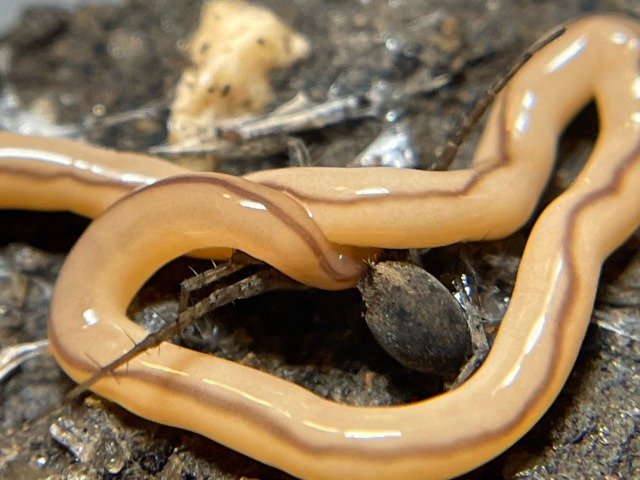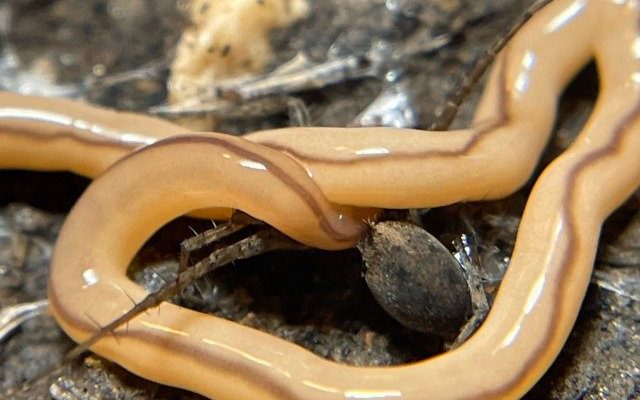
Now, before you start envisioning a high-tech lab with microscopes and petri dishes, let’s set the record straight. Monitoring ribbon worms doesn’t require a degree in biology or fancy equipment. It’s more about observing, recording your findings, and sharing them with the scientific community. It’s like being a nature detective, with a magnifying glass in one hand and a notebook in the other. Ready to dive in? Let’s explore how you can get started with monitoring ribbon worms for citizen science projects!
What Are Ribbon Worms?
You might be wondering, “What exactly are ribbon worms?” Well, ribbon worms, or *Nemertea*, are long, slender creatures that can vary in size, often measuring just a few centimeters to a couple of meters in length. They typically have a flat body that gives them that ribbon-like appearance, which is where they get their name. You could think of them as the spaghetti of the ocean floor—long and thin but incredibly fascinating!
These worms are primarily found in marine environments, although some species live in freshwater. They’re known for their unique feeding method, using a specialized structure called a proboscis to capture prey. This proboscis is like a retractable tongue that can shoot out to snag small fish and crustaceans. Pretty cool, right?
Monitoring ribbon worms is essential because they play a vital role in the ecosystem. They help break down organic materials and serve as prey for various marine animals. By participating in citizen science projects focused on ribbon worms, you contribute valuable data that can help scientists track changes in their populations and understand their ecological significance.
Why Participate in Citizen Science?
You might be asking yourself, “Why should I get involved in citizen science?” Well, there are plenty of reasons! First off, contributing to scientific research can be incredibly fulfilling. It’s a chance to play a role in something larger than yourself—helping scientists gather data on ribbon worms, their habitats, and how they respond to environmental changes.
Here’s the thing: every little bit of data counts. Scientists often face challenges in gathering data across large areas or remote locations. That’s where citizen scientists come in. By monitoring local ribbon worm populations, you can provide insights that might otherwise go unnoticed. Plus, you get to learn more about your local ecosystem in the process. It’s a win-win!
Moreover, citizen science fosters community engagement. You’ll likely connect with fellow nature enthusiasts who share your interests. Together, you can plan outings, share findings, and even collaborate on projects. It can turn a casual hobby into a passion, transforming simple walks by the water into exciting adventures filled with discovery.
Getting Started with Monitoring Ribbon Worms
Ready to jump in? Here’s a simple roadmap to start monitoring ribbon worms in your area.
1. **Research**: Begin by learning about the ribbon worm species native to your locality. Some might be common, while others may be rare or endangered. Websites like local naturalist groups or university resources can be incredibly helpful.
2. **Select Your Location**: Choose a location where ribbon worms are likely to be found. Look for moist environments, such as the intertidal zone along coastal areas, or even freshwater streams and marshes.
3. **Gather Your Gear**: You don’t need high-tech equipment to get started. A simple field notebook for jotting down observations, a camera for capturing images, and maybe a small container for examining specimens (if allowed) will do the trick.
4. **Create a Monitoring Plan**: Decide how often you’ll visit your chosen site and what specific aspects you’ll monitor. Are you looking at population numbers? Tracking how their presence changes over the seasons?
5. **Record Your Findings**: Each time you visit, take careful notes. Document date, location, weather conditions, and any observations about ribbon worm activity. If you see different species, take pictures and note their characteristics.
6. **Share Your Data**: After gathering data over time, consider sharing your findings with local universities, natural history museums, or citizen science platforms. Your observations can become part of larger studies that inform conservation efforts!
Tools for Monitoring Ribbon Worms
While you don’t need a lot of equipment, having the right tools can make your monitoring efforts smoother and more effective. Here’s a quick list of essentials you might want to consider:
- Field Notebook: Ideal for jotting down quick observations and notes.
- Camera or Smartphone: For capturing images of ribbon worms and their habitats.
- Magnifying Glass: Helps examine details up close.
- Measuring Tape: Useful for recording the length of worms you find.
- Field Guide: A guidebook or app to identify local ribbon worm species.
These tools don’t have to be expensive. Simple items you probably already own can be quite effective. The key is to approach your observations with curiosity and enthusiasm.
Common Challenges in Monitoring Ribbon Worms
While monitoring ribbon worms can be rewarding, it’s not without its challenges. Here are a few common obstacles you might face and how to overcome them.
**1. Identification Confusion**: There are many species of ribbon worms, and they can look quite similar. If you’re struggling to identify specific types, consider reaching out to local experts or joining forums where you can share photos for identification help.
**2. Weather Conditions**: Certain weather conditions can affect your monitoring. Heavy rain or rough waters might limit your ability to access the sites. Plan your visits for favorable conditions, but don’t let occasional weather deter you. Sometimes, a little rain can bring new discoveries.
**3. Time Commitment**: Finding time to monitor can be a juggling act amid busy schedules. Consider setting a routine, like a bi-weekly visit, to make it easier to stick with your project without it feeling overwhelming.
**4. Data Management**: Keeping track of your findings can get tricky, especially if you gather a lot of information. Consider using digital tools like spreadsheets or apps designed for citizen science to help organize your data.
Embrace these challenges as part of the journey. Every obstacle teaches something new and helps deepen your understanding of ribbon worms and their ecosystems.
The Impact of Your Contributions
Participating in citizen science projects focused on ribbon worms goes beyond just collecting data—it can lead to real-world impact. Your findings can help scientists understand changes in marine ecosystems, track pollution levels, and measure the health of our waters.
Consider this: a community of citizen scientists coming together can create a wealth of collective knowledge. Each observation adds a piece to the puzzle, leading to insights that can help shape conservation efforts.
Moreover, sharing your findings can inspire others in your community to get involved. You never know who might be inspired by your work. Maybe your neighbor will start monitoring their own local waterway, or a school group will partner with you on a project. Every little action contributes to a larger narrative about protecting our planet.
Monitoring ribbon worms for citizen science projects is an exciting and enriching way to connect with nature. You don’t need to be a scientist—just a curious soul willing to explore your environment. Armed with a notebook, some simple tools, and a passion for discovery, you can make a difference.
So, why not give it a shot? Every observation you make contributes to our understanding of these remarkable creatures and their place in the ecosystem. Plus, you’ll probably have a blast along the way! Whether you’re in your backyard or at a local beach, there’s a whole world of ribbon worms waiting to be discovered. Happy monitoring!

